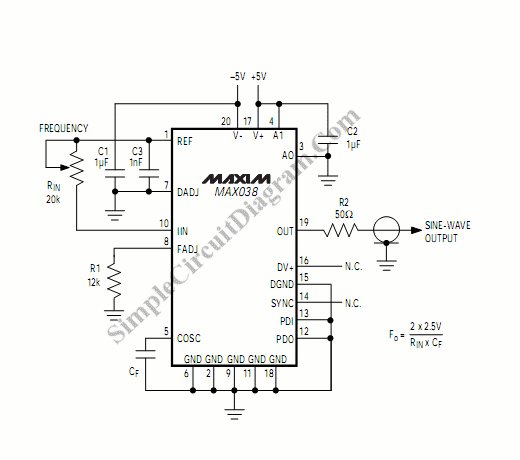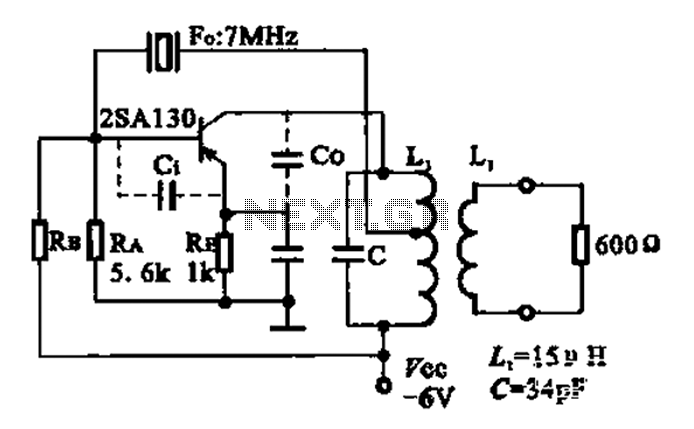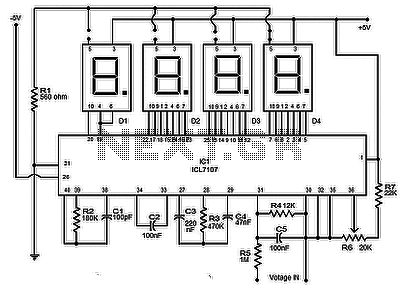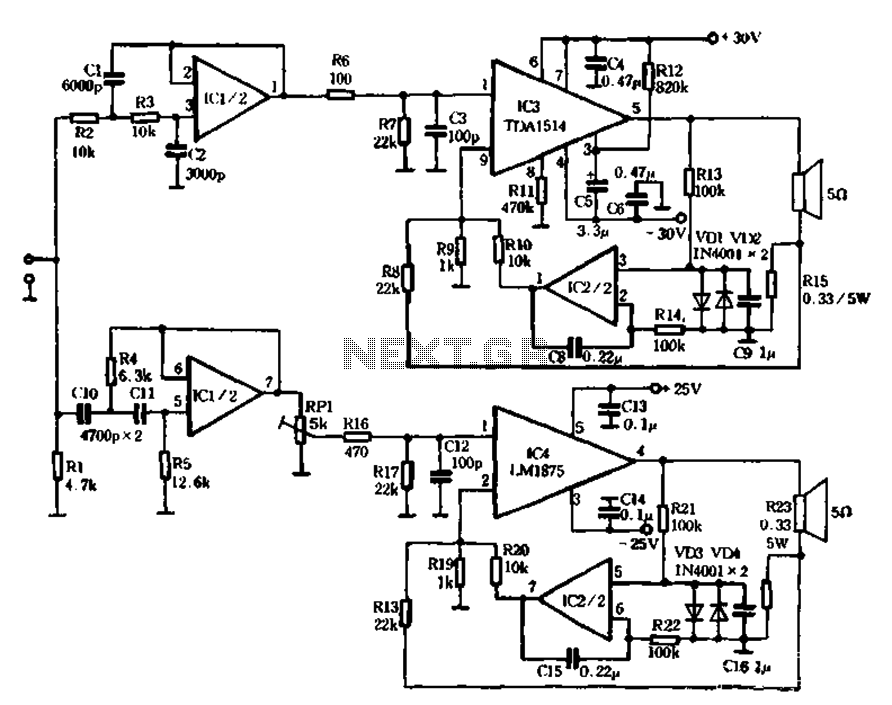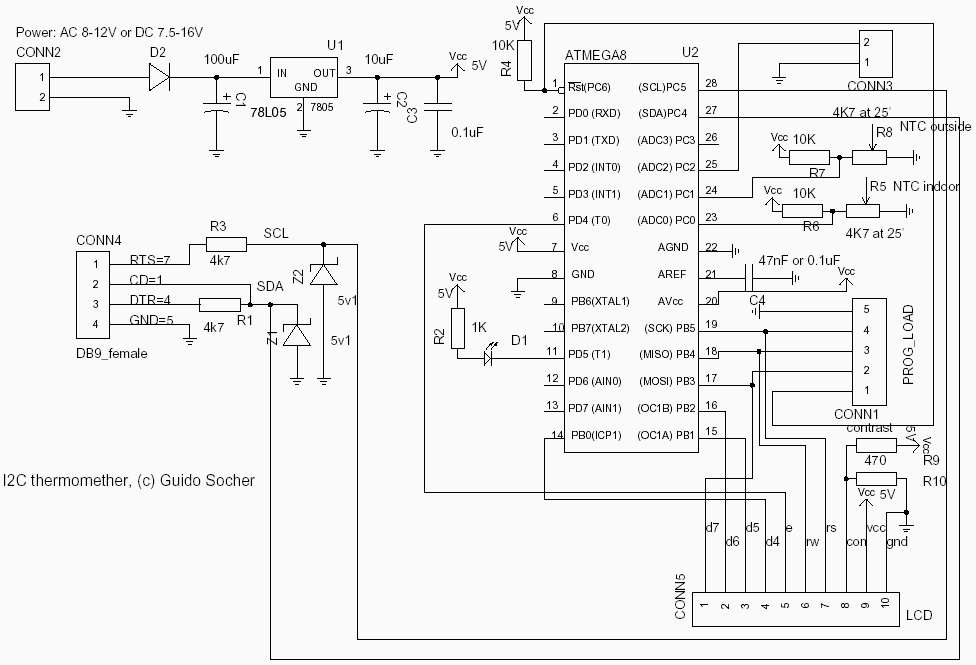
Power-line frequency meter
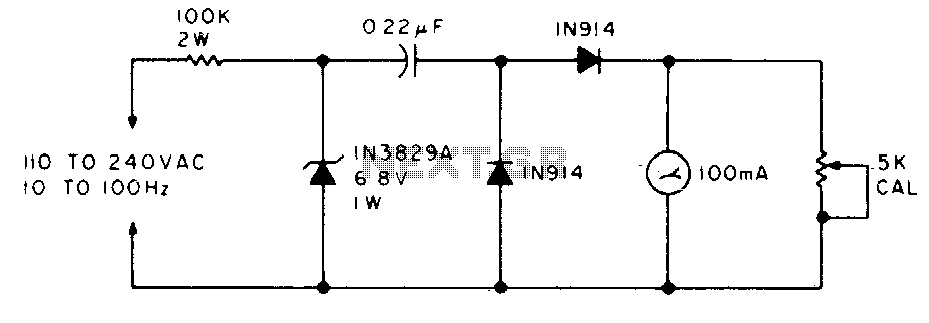
The meter will display the frequency from a power generator. Incoming sine waves are transformed into square waves by the 100K resistor and the 6.8 V zener diode. The square wave is differentiated by the capacitor, and the current is averaged by the diodes. The average current is nearly directly proportional to the frequency and can be read directly on a 100 mA meter. To calibrate, connect the circuit to a 60 Hz power line and adjust the 5 K potentiometer to read 60 mA.
The described circuit functions as a frequency meter, utilizing a straightforward analog approach to convert the frequency of a power generator into a readable current output. The circuit begins with the input of sine wave signals from the power generator, which are characterized by their smooth periodic oscillations. The first stage of the circuit employs a 100K ohm resistor in conjunction with a 6.8 V zener diode to convert these sine waves into square waves. The zener diode serves to clip the peaks of the sine wave, allowing only the necessary voltage levels to pass through, while the resistor helps to limit the current and stabilize the operation of the zener.
Following the conversion to square waves, the circuit incorporates a capacitor that differentiates the square wave signal. Differentiation in this context refers to the process of measuring the rate of change of the square wave, which results in a pulse-like output that is proportional to the frequency of the incoming signal. This pulse output is then fed into a set of diodes that average the current, effectively smoothing out the fluctuations to provide a steady average current that correlates with the frequency of the input signal.
The average current produced by this stage is directly proportional to the frequency of the incoming sine waves, allowing for a simple and effective means of measuring frequency. This average current can be displayed on a 100 mA analog meter, providing a visual representation of the frequency being measured.
For calibration purposes, the circuit is designed to be connected to a 60 Hz power line. By adjusting the 5 K potentiometer, the output can be fine-tuned to ensure that the meter reads exactly 60 mA when the circuit is exposed to the standard 60 Hz frequency. This calibration step is crucial for ensuring accurate frequency measurements across different operational conditions. Overall, this circuit provides a reliable method for frequency measurement in power generation applications.The meter will indicate the frequency from a power generator. Incoming sine waves are converted to square waves by the 100K resistor and the 6,8 V zener. The square wave is differentiated by the capacitor and the current is averaged by the diodes. The average current is almost exactly proportional to the frequency and can be read directly on a 100 mA meter To calibrate, hook the circuit up to a 60 Hz poweraline and adjust the 5 K pot to read 60 mA.
The described circuit functions as a frequency meter, utilizing a straightforward analog approach to convert the frequency of a power generator into a readable current output. The circuit begins with the input of sine wave signals from the power generator, which are characterized by their smooth periodic oscillations. The first stage of the circuit employs a 100K ohm resistor in conjunction with a 6.8 V zener diode to convert these sine waves into square waves. The zener diode serves to clip the peaks of the sine wave, allowing only the necessary voltage levels to pass through, while the resistor helps to limit the current and stabilize the operation of the zener.
Following the conversion to square waves, the circuit incorporates a capacitor that differentiates the square wave signal. Differentiation in this context refers to the process of measuring the rate of change of the square wave, which results in a pulse-like output that is proportional to the frequency of the incoming signal. This pulse output is then fed into a set of diodes that average the current, effectively smoothing out the fluctuations to provide a steady average current that correlates with the frequency of the input signal.
The average current produced by this stage is directly proportional to the frequency of the incoming sine waves, allowing for a simple and effective means of measuring frequency. This average current can be displayed on a 100 mA analog meter, providing a visual representation of the frequency being measured.
For calibration purposes, the circuit is designed to be connected to a 60 Hz power line. By adjusting the 5 K potentiometer, the output can be fine-tuned to ensure that the meter reads exactly 60 mA when the circuit is exposed to the standard 60 Hz frequency. This calibration step is crucial for ensuring accurate frequency measurements across different operational conditions. Overall, this circuit provides a reliable method for frequency measurement in power generation applications.The meter will indicate the frequency from a power generator. Incoming sine waves are converted to square waves by the 100K resistor and the 6,8 V zener. The square wave is differentiated by the capacitor and the current is averaged by the diodes. The average current is almost exactly proportional to the frequency and can be read directly on a 100 mA meter To calibrate, hook the circuit up to a 60 Hz poweraline and adjust the 5 K pot to read 60 mA.
